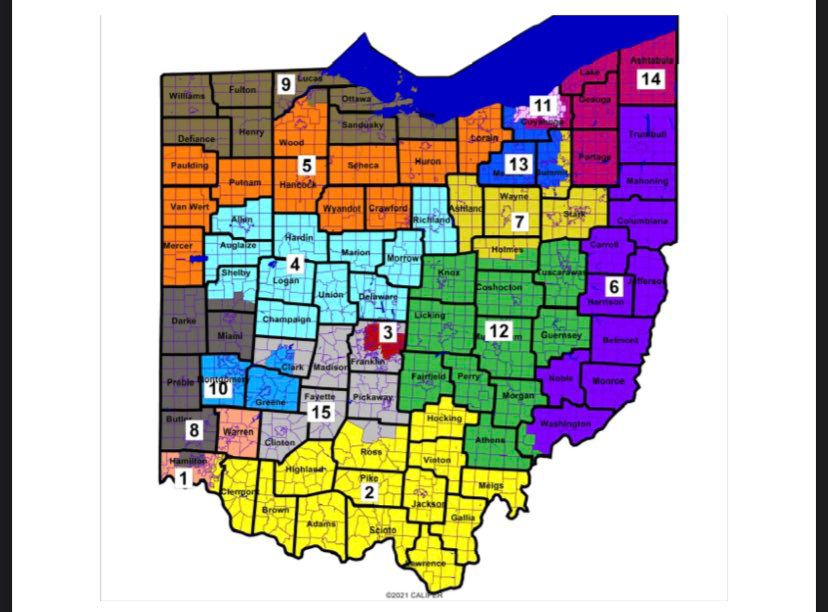COLUMBUS, Ohio — In a party-line vote, the Ohio Senate approved boundaries for Ohio’s 15 U.S. House seats amid a contentious partisan battle.
The Ohio House of Representatives will now consider the Senate’s map at a Wednesday committee hearing. The map could go before the full House Thursday.

While U.S. law requires states to redraw House district boundaries every decade, the boundaries approved Tuesday would only be effective for four years. A 2018 referendum approved by voters states that maps that don’t get bipartisan support can only be enacted for four years.
That means if approved by the Ohio House and signed into law by Gov. Mike DeWine, the new boundaries will only apply to the 2022 and 2024 elections.
The referendum states that districts cannot “unduly favor or disfavor any political party or its incumbents.”
Republicans unveiled a new map late Monday that appeared to make several districts more competitive. According to the bill, the map would include six Republican-leaning districts, two Democratic-leaning districts and seven competitive districts.
The legislation also noted that the new map would pit two Republican incumbents against each other as Ohio will lose a House seat due to shifts in population.
But Democrats and advocates for equal districts dispute the number of competitive seats in the bill.
“This is a partisan, gerrymandered map,” Jen Miller of League of Women Voters of Ohio said. “We are gravely disappointed and concerned.”
Equal district advocates noted some of the odd boundaries included in the maps, most notably how residents of the Lorain County in the Cleveland area would have the same representation as residents in Van Wert County along the Ohio/Indiana border.
Dave’s Redistricting, which provides analysis of districts, says there are seven likely GOP districts, two likely Democratic districts and six that are competitive, but the GOP would hold slim advantages in five of the six seats.
Ohio Senate Majority Whip Rob McColley, R-Napoleon, said his caucus feels the map is fair.
"The map before you is constitutionally compliant, it is compact and it is competitive," said McColley.
Senate President Matt Huffman, R-Lima, and House Speaker Robert Cupp, R-Lima, finalized an amended plan Friday before it was released late Monday night. Huffman said talks over the weekend with Senate Minority Leader Kenny Yuko, D-Richmond Heights, suggested nothing was going to be gained if negotiations continued until the end of the month when the map is due.
"Democrats had a specific demand and that was to gerrymander somewhere between 10 and 12 of the districts in the state so that they weren't competitive. And having been the drafter of the original resolution, that's not within the spirit of the reform that Ohio voters passed," said Huffman.
House Republicans are expected to approve the map out of committee Wednesday and on the floor Thursday. However, House Speaker Bob Cupp, R-Lima, was asked if he is still willing to negotiate with Democrats to try and reach a 10-year map.
"If they want to come and make a proposal, I'm certainly open to that. Of course, we're only one house here. It's a two-house process plus the governor. So I'm not sure what can be done at this point," said Cupp.



